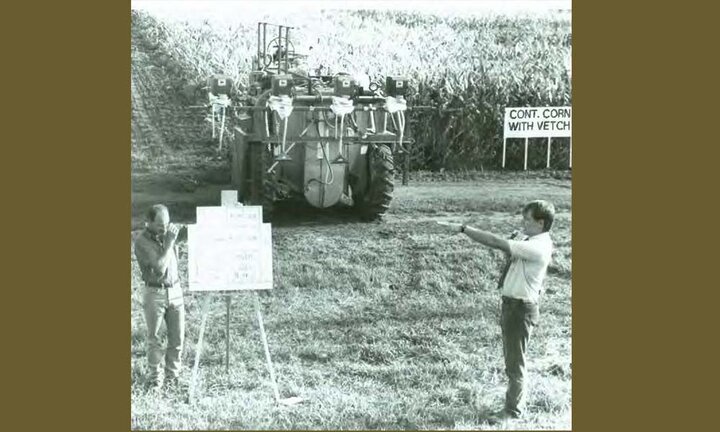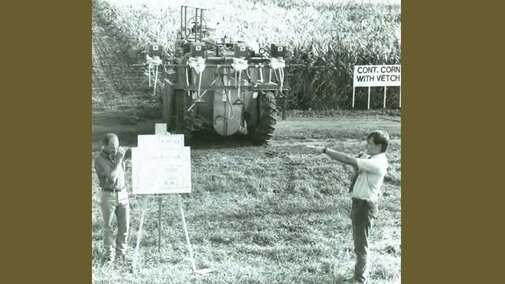
We are close to the end of the year and hopefully most of the fields that were designated for soil sampling have been sampled and the soil is at the labs, or the data is back in your computer.
It is time to start evaluating last year’s successes and failures, and then start planning for next year. As a soil fertility specialist, it is my responsibility to stress the need to evaluate the fertility levels in your fields, and suggest you plan to maintain what is doing well, find the areas that need supplementation, and maybe coast a little where the numbers are a bit greater than needed for profitable production.
I could have written the above paragraph in 1984, the first year of my duties at the Haskell Agricultural Laboratory. Many specifics of where we get our fertilizers, how we apply them, even how we assess the nutrient status of our fields have changed since then. But what has not changed is that a plant has roots and those roots need to acquire nutrients from the soil before they can help the plant grow. The basic principles of physics, chemistry, and biology have not changed. Neither have the principles on which plant nutrition is based.
The idea of finding the limiting factors and addressing those factors is still functional, but what has changed is we now think of making those decisions on a smaller and smaller area of ground. We still need to know what we now call the 4Rs: The right rate, right place, right time, and right source. The most important R is the right rate. Even the 4Rs can be reduced to one concept: the nutrient needs to be near the root when the plant needs it. Everything else is just fine tuning.

And there is nothing wrong with fine tuning. That is our job as applied scientists working with the agricultural production industry. Fine tuning is making the operation more efficient, and efficiency is profitability. That is how I have spent the last 33 years; trying to improve the efficiency of the corn/soybean growing endeavor. The process never ends, and the physical principles I mentioned above become an engineering challenge to apply. That combination of technology and science is critical to maintaining our soil resources and production capacity into the future.
For example, when I started most of the nitrogen put on fields was anhydrous ammonia and the prevailing technology was the use of regulators that were difficult to calibrate because the ammonia was in both gas and liquid forms at the same time, and the proportion of each depended on temperature and pressure. One early project was to demonstrate the improvement in precision when the technology to keep the anhydrous ammonia in the liquid form became available. We were concerned more about getting uniform rates across the applicator bar and across a field; now the concern is knowing how much nitrogen is needed as the applicator goes across the field and the rate can vary continuously.
While the technology to deliver is much improved, we still are not all that sure about how much nitrogen is needed. Back then we urged farmers to sample deep in their soils to quantify any leftover nitrogen, and use that left-over nitrogen in the accounting for next year’s corn crop. Now we have more corn-soybean rotations where the nitrates in the soil don’t affect the next year’s soybean crop, as in the past with corn following corn. In addition, nitrogen management has gotten much more efficient, and unless there is some catastrophic event that reduces potential yield, like the 2012 drought, large amounts of nitrogen in the soil after harvest are unlikely. Besides, everyone hates to take deep soil samples.
The future is in reading the plant midseason and applying what is needed based on signals from the plant and, perhaps, models that predict soil supply.
The challenge will be how to both maximize short-term profits and maintain our soil resource for the future. We have not solved this problem, but agriculture is developing tools that help producers quantify their off-field impacts to the atmosphere, the ground water and surface water. The interest in cover crops is an outgrowth of the desire to keep the soil covered in the non-cropping part of the season so there is less erosion, less leaching of nutrients, and the soil environment is enhanced.
Looking Back over Crop Nutrition Themes
This will be my last article for CropWatch. I thank all who have helped make CropWatch the go-to source for unbiased interpretation and analysis of crop information. We don’t always have research on every subject, but we try and use the research we do have, our experience, and our knowledge to give informed suggestions. I thank the farmers who have shared their land and insights with me as we have worked together to figure out how to be more efficient in using the resources we have available. Sometimes it is difficult to see change in the short term, but if we look back over decades we can easily see the progress we made in our knowledge and our ability to implement that knowledge. I know the process will not stop any time soon.
As I think back on my articles in CropWatch, they can be grouped together with the following themes:
- Have a regular plan for soil sampling, it is better to sample less often, but with more intensity.
- Utilize NebGuides and the recommendations in them to make nutrient management plans.
- Be ready to adjust nitrogen in-season if conditions for nitrogen loss occur.
- Irrigation management needs to be efficient since over irrigation will leach nitrogen and increase nitrogen needs.
- Split nitrogen applications when possible to match crop need through the season or utilize technology to maintain nitrogen in the root zone.
- Use stalk nitrogen sampling at the end of the season to verify the nitrogen program is effective.

